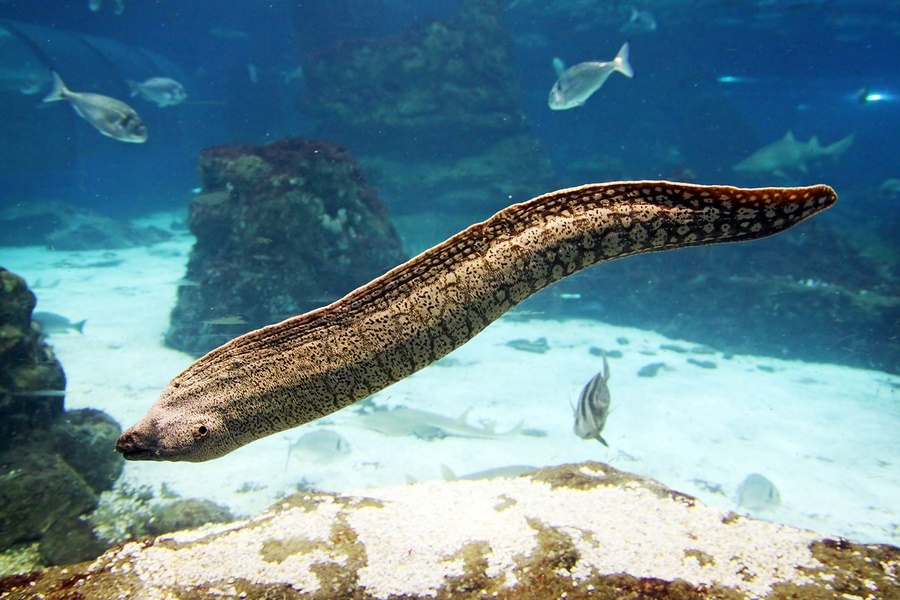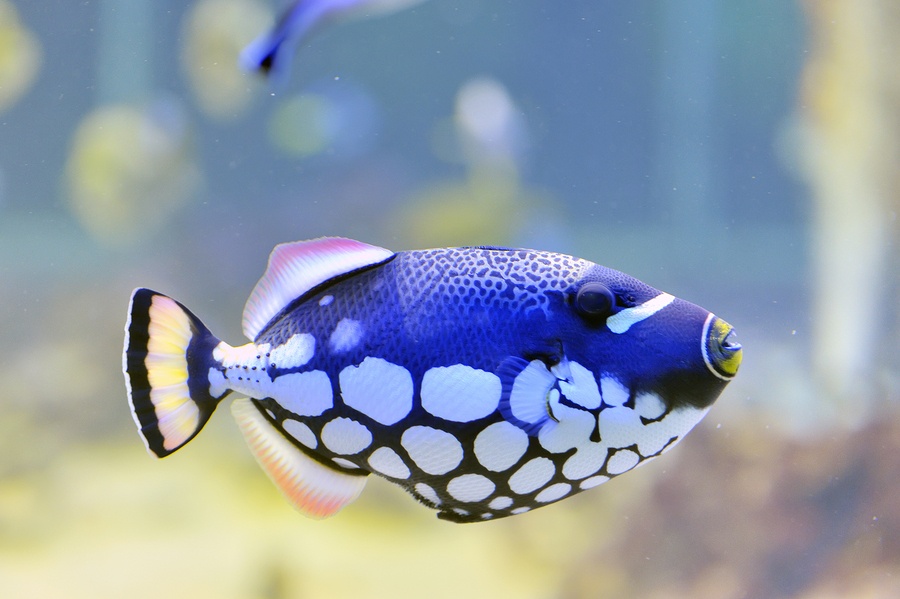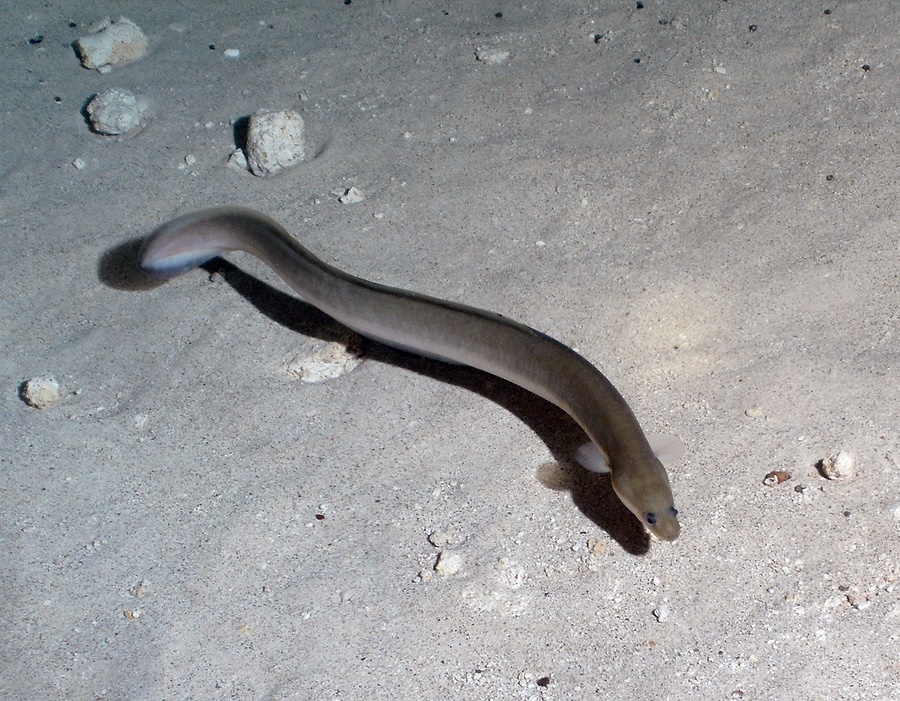Worldwide there are 15 genera in the family Muraendae to which the moray eels belong. This accounts for a total of 200 species. Of those, about a dozen could be raised in a home aquarium. Only five of those, however, can be safely housed with other fish, and this is still a highly conditional assertion.
- Dragon Moray Eel
- Snowflake Moray Eel
- Zebra Moray Eel
- Whitemouth Moray Eel
- Chainlink MorayEel
The saltwater moray eels are all highly aggressive carnivores. They even look menacing, holding their mouths open not as a means of intimidation, but as a physiological necessity.
Moray Eel’s Mouth
A moray eel’s mouth must be open so that muscles in the gill cavity that are attached to the lower jawbone can draw water through the oral cavity; and over the gills. The result of this very practical arrangement; however, is an especially fierce appearance augmented by the creature’s pointed fangs that look more than ready to do battle.
Although they are formidable hunters, moray eels are also shy bottom dwellers that require adequate spaces to hide. They possess lateral line pores on their heads; that allow them to lie in wait with their heads extended sensing vibrations in the water around them. This ability, combined with their superb sense of smell compensates for limited vision; while the creature’s wedge-shaped head allows it to extract prey from almost any hiding place.
Prey
When an eel senses prey entering its perimeter; the eel moves its head from side to side to more accurately find and identify the approaching scent. To confirm their selections; morays eels often tap or bump potential prey with their snouts, using taste and touch receptors in their nose and lips.
The species most commonly kept by enthusiasts grow to an average maximum length of 3 feet / 0.91 meters, except the Whitemouth; which can reach 4 feet / 1.22 meters.
Moray eels are notoriously difficult to feed in captivity, and are prone to periods of hibernation.




 Author and long-time animal lover. Sharing knowledge on pet care through experience and the written word.
Author and long-time animal lover. Sharing knowledge on pet care through experience and the written word.